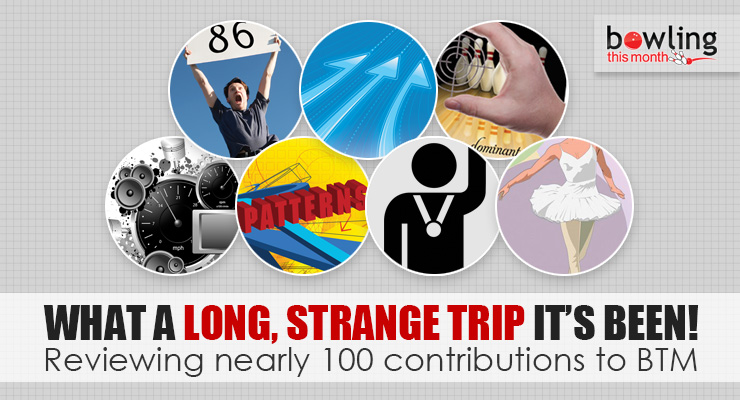As I write this, I am fast approaching my 100th contribution to Bowling This Month. In September 2006, more than 3,000 days ago, I wrote my first article for Bowling This Month while I was working in Malaysia. My BTM contributions collectively add up to more than 170,000 words written about the sport of bowling. I have been blessed with both the opportunity and responsibility to share my findings and ideas. And, I take this responsibility very seriously.
From the very first article, Can Monkeys and Ballet Dancers Help Us Improve Bowling Performance?, I have made an effort to use sport science research in the majority of my contributions. I have made it my life’s work to improve the sport of bowling with fact-based and tested contributions. It is my strong belief that bowling should conduct more research as well as adapt sport science research findings to further our efforts to be recognized as a sport in the world.
After reflecting upon the last decade of articles published in BTM, the sport science and research-based articles are the most important, in my opinion. These were based on a foundation of research and provide new insights. And, I hope my writing has acted as a catalyst to help the bowling world to think differently about our sport. Brief summaries of some of my favorite articles are provided below.
Sport science and/or research-based article summaries
In early 2008, I wrote Using a Quiet Eye is the Key to Improving Target Accuracy, sharing an important sport science concept with the bowling community. Quiet eye involves the process of where an athlete looks as well as the length of the gaze on a target before physical execution begins. Specifically, the proficiency of an athlete’s execution is directly correlated to how many eye gazes on and off the target and how much time is visually spent on the targets. From the research base, elite athletes spend more time on targets with less eye movements off of the targets.
In July 2010, I returned to the quiet eye concept in Using the Quiet Eye to Avoid Choking. Additional research illustrates the fact that elite athletes have more gaze time on their targets. Yet, under stress, the quiet eye gaze time ...
Already a premium member? Click here to log in.


